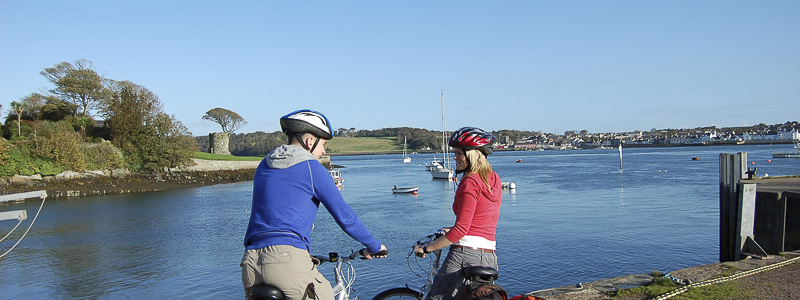By By Elena Bianchi Network Development Manager, Rural Gaps Project Sustrans
(in Volume 29)
Common land provides a fantastic opportunity for people to enjoy the landscape, get fresh air and be active. In South East Wales, Common land is at the centre of a project Sustrans is delivering to develop new walking and cycling links to the existing National Cycle Network[1].
Sustrans is the charity making it easier for people to walk and cycle (Sustrans, 2017)[2]. In 2016, Sustrans Cymru has been awarded European funding under the Rural Development Programme of the Welsh Government to look at the development of new walking and cycling routes in rural Wales.. The routes will link rural communities and tourism destinations to the existing NCN, opening up new possibilities for residents and visitors to explore the areas and enjoy the countryside as well as supporting local businesses. The project responds to the requirements set by the Active Travel Act (Welsh Government, 2013)[3] and the Wellbeing for future generations Act (Welsh Government, 2015)[4].
In partnership with the local County Council, local stakeholders and the Duke of Beaufort’s Breconshire Estate Commoner’s Association, we have been working to open a new link along common land, within Blaenau Gwent County and Borough Council that will complete NCN route 46 – Heads of the Valleys. The Beaufort Common is located in a beautiful area along the head of the South Wales Valleys and at the edge of the Brecon and Beacons National Park. Cattle grazing is the main activity on Beaufort Common. The Commoners’ association accepted the proposal very positively and has been supportive throughout the process, providing background knowledge and technical information to allow progress.
The project is proving to be a significant learning experience. In addition to the information associated with the procedures to obtain consent to carry out works on common land, we have become familiar with the history of common land and its role in shaping the landscape. Project partners have shared several useful resources aimed at understanding what common land is and how all of us can experience it, by respecting its role as an economic resource and natural habitat for several wildlife and vegetation species (Blaenavon WHS, 2018)[5].
Besides providing opportunities for travel actively and enjoy the open air, the route will contribute to increase awareness and respect for common. We will be able to share the knowledge gained from this process and make it accessible to all users by using interpretation panels that will raise awareness and communicate to recreational users the sense of place of this and other local commons. Increased walking and cycling in the area can be a deterrent for offensive behaviours such as fly tipping and use of motorised vehicles, likely to harm vegetation and wildlife.
The work is still in progress and we hope to complete the construction of the route by the end of 2019. In the meantime, working together and taking on board local interests and knowledge is providing a solid basis that will allow all users to increase mutual knowledge and enjoy walking and cycling in a safe and meaningful way along Beaufort Common. Sustrans will share the lessons learnt during this project on an online platform, to allow similar work to be realised on other commons.
[1] Sustrans (2017) About the National Cycle Network [Online] Available at: https://www.sustrans.org.uk/ [Accessed 5th March 2018]
[2] Sustrans (2017) About Sustrans [Online] Available at: https://www.sustrans.org.uk/ [Accessed 5th March 2018]
[3] Legislation.gov.uk (2013) Active travel (Wales) Act (2013) [Online] Available at: http://www.legislation.gov.uk [Accessed 5th March 2018]
[4] Legislation.gov.uk (2015) Well Being of Future Generation (Wales) Act 2015 Available at: http://www.legislation.gov.uk [Accessed 5th March 2018]
[5] Blaenavon World Heritage Site (2018) Commonsense [Online] Available at: http://www.visitblaenavon.co.uk [Accessed 5th March 2018]

